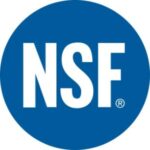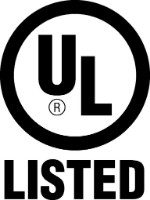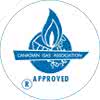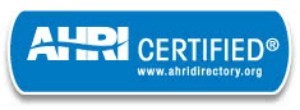Commercial Food Equipment Certification Marks: What They Are and Why They’re Important


It’s no secret that food manufacturers and producers are placed under the strictest of standards – and for good reason, according to data compiled by the CDC, food-related illnesses account for roughly 76 million illnesses 325,000 hospitalizations, and 5,000 deaths per year in the United States. It’s a staggering figure and one that presiding agencies are continuously attempting to diminish. That’s why stringent compliance guidelines have been put into place for all food distribution firms, food manufacturers, and their corresponding supply chains – even if some sources aren’t located in-country.
One of the latest and most notable acts is called the Food Safety Modernization Act (FSMA). It was officially made a federal law back in 2011 during the Obama presidency and it serves to close many of the gaps felt in previous programs, the most notable being the addition and expansion of the sanitary design concept. To put it very simply, food manufacturers, producers, and distributors who package and process any food products in their facilities must only use equipment that has been designed with optimum hygiene in mind. Generally speaking, this means that the commercial food equipment must be able to be simple and quick to disassemble for regular cleaning, contain only smooth, non-porous surfaces, and be free of any elements that might contribute to unsanitary conditions, such as mold growth.
Of course, sanitary design is just one piece of the complex puzzle of compliance to which food equipment manufacturers must adhere. There is also a slew of other factors that go into engineering the safest and most modern equipment available, such as eco-friendliness, gas safety, and more. In order to guarantee that the equipment is up to snuff, food equipment manufacturers, either by their own volition or at the request of the client, will file for a certification from the appropriate certification body and/or bodies.
The filing process itself can be an arduous process, but it’s also one that grants both the manufacturer and the food producing client increased compliance. Thus, there is a list of various skilled certifying bodies that will grant these special endorsements. We’ve created this guide in an effort to simplify the selection process for both parties.
In this guide, we’ll discuss:
To get an in-depth look at the various certification marks and how they work, read on.
If you happened to peruse this guide’s table of contents before diving into this first section, chances are, you were taken aback by the number of bodies that are licensed to grant food equipment certifications. What’s important to note here, is that many of these governing bodies are held to near-identical standards. What does set them apart, though, are two factors: 1) the location(s) in which the equipment will be used and 2) the type of processing the equipment performs.
What’s most important to consider about the various food certification marks is that many overlap with one another and, depending on the part of the world in which the equipment is used, one can cancel another out. For instance, if a piece of equipment carries the NSF International mark, it’s safe to assume that it has undergone the most stringent testing possible anywhere, thus eliminating the need for the piece to carry additional marks from other local bodies.
But, although many of these certifications include similar standards, all feature unique application processes depending on the separate rules of the certifying body and/or its contracting labs. For instance, labs ETL (Edison Testing Laboratories) and UL (Underwriters Laboratories) both carry the distinction of being Nationally Recognized Testing Labs (NRTL), that, for all intents and purposes, hold exactly the same weight. But, because each is a separate, third-party laboratory, ETL and UL have completely divergent application processes.
NSF International is an American health and safety company that provides a variety of services to more than a dozen different industries, including product certification for food equipment manufacturers. As mentioned, the NSF International mark serves as one of the gold standards for sanitation standard testing, in particular.
What makes the NSF International mark so distinguished is that it goes beyond routine sanitary design standards to include food equipment processes and procedures. This means that, in order for a manufacturer to obtain the mark, it must be fully prepared to supply the certifying body with any and all components that factor into the procedural use of the equipment. Included in the submission, must also be the corresponding certifications attached to all components manufactured by all outside companies that are part of the manufacturer’s supply chain.
Currently, there are two marks that manufacturers can obtain:
The NSF (the standard NSF International symbol):

And the NSF/ NSFC symbol:

The NSF/NSFC symbol, shown above, shows that the product has passed all relevant sanitary testing that makes it compliant for both the U.S. and Canadian markets. It is also possible for products to hold both the NSF International and ANSI (American National Standards Institute) marks, proof that the product meets the standards of both bodies.
Underwriters Laboratories, better known as UL, is an American certifying body that provides testing and certification services for a variety of products and their corresponding standards, including environmental, safety, water quality, and beyond. In terms of certifying food safety, UL maintains a laundry list of considerations:
In addition to those mentioned above, the NRTL laboratory also certifies processes, products, systems, and even entire facilities. Currently, the UL mark is recognized in more than 100 countries worldwide and offers a range of services to complement certification, like auditing, inspection, and testing.
As of today, UL uses 6 different marks to denote the qualified products tested in its food safety unit. These include:
UL Listed (the basic UL mark):

UL/ULC Listed (the basic UL mark that has also been tested against Canadian standards):

UL Listed Gas-Fired (certification of equipment that is powered mainly by gas):

UL Listed Marine (equipment that is safe for use in maritime vessels):

EcoLogo, a certification that guarantees the equipment will hold up to environmental laws throughout its lifespan:

Manufacturers can apply for one or more of these marks depending on the needs of the product, as dictated by its design, sourcing, and relevant materials.
The mark provided by the European Union to all qualified equipment manufacturers is ‘CE’:

Like UL and NSF, the CE mark covers a variety of different products, from food equipment to toys and beyond. It is only applicable to the listed products produced in the European Economic Area, i.e., the states included in the European Union.
That being said, the CE mark doesn’t just stop at production, the EU also mandates that all products and components of products being sold in the EU, not just manufactured, must carry the special CE symbol, too. Retailers operating within the EEA are not authorized to carry the listed products unless they have been certified by an approved body.
Interestingly, the CE does differ from many of the other food equipment certification marks in one big way – in some cases, it allows for self-certification. This means that no accredited third-party certification body needs to be involved in the process. That said, ALL food-related processing products must hold a CE mark – self-certified or otherwise – and the subsequent sale of the product is entirely dictated by the EU.
As highlighted above, several of the certifying bodies follow the exact same standards, thus making room for reciprocity between the governing countries and their standards. A good example of this is the Canadian Standards Association (CSA), a certifying firm that provides authentications that are usually interchangeable with NSF or UL Listed products, particularly those pieces of equipment that feature electrical and gas functions.
Perhaps unsurprisingly, the CSA mark is made specifically for the Canadian market. Thus, if a food equipment manufacturer is designing a piece of equipment for a client based in Canada, it will want to seek out a CSA mark. Alternatively, if this very same client is planning on using the same piece of equipment in both Canada and the U.S. (and perhaps internationally), the food equipment manufacturer may only need to obtain one NSF, UL, or ETL mark.The CSA currently grants five different categories of marks. They are as follows:
The Basic CSA Symbol:

The CSA/US Symbol (denotes that the product is safe to use both in U.S. and Candian markets):

The CSA Star Mark (denotes that the product has met U.S. gas-fired standards):

The CGA Blue Flame (denotes that the product has met Canadian gas-fired standards):

The CSA Sanitation Mark (denotes that the product meets all NSF/ANSI requirements):

Edison Testing Laboratories, better known as ETL, is a mark that is provided to all complying parties by the NRTF, Intertek. As outlined above, ETL, UL, and CSA carry very similar weights and are held against the same standards for the North American market. These include:
What makes ETL different from CSA and UL, of course, is the certification process. This means that the food manufacturer must select what’s best for the client, both in terms of time and flexibility of the granting of the certification. Although it’s not a cardinal rule, the ETL Listed mark is generally thought to be the best for products that are shipped internationally, as it is a more universal mark that customs agents look for first. This can, of course, help streamline the shipping and receiving processes. The ETL marks are as follows:
ETL Intertek (denotes the basic ETL mark):

ETL Intertek Listed (denotes that the product is safe for both the U.S. and Canadian markets):

ETL Intertek Sanitation Listed (denotes that the product has been tested and continues to be tested for peak sanitation):

The Canadian Gas Association provides food equipment manufacturers with natural gas and equipment certification standards, specifically for gas-powered equipment. The CGA currently has one mark that is made for Canadian clients, in particular, called the ‘CGA Blue Flame Symbol’:

This symbol means that it has met and been tested against Canadian standards for gas appliances and/or liquid petroleum products.
Currently, the CGA Blue Flame can be obtained through the Canadian Standards Association. Though the regulations are governed by the CGA, it is the CSA that will grant the CGA Blue Flame to all worthy food equipment manufacturers producing gas-powered equipment for the Canadian market (as noted previously in this guide).
The Air-Conditioning, Heating, and Refrigeration Institute, known more simply as the AHRI, tests a number of different refrigeration, heating, and air-conditioning processes and components, most relevantly, ventilation and refrigeration for food and restaurant equipment. The mark issued by AHRI is the AHRI Certified mark:

Typically, the AHRI Certified mark (the organization’s sole symbol) is obtained by food equipment manufacturers and/or their clients who must ensure that the refrigerated components of the products are in line with standards, and continue to be throughout the product’s lifespan.
According to AHRI, firms that hold the AHRI Certified mark benefit from international safety recognition, increased customer confidence, compliance of the EPA’s ENERGY STAR program, and allows food manufacturers to easily benefit from “green” and “eco-friendly” tax incentives.
For more information on the specifics surrounding food equipment certification marks and what they mean for your food equipment business, visit the following resources:
Our sales engineers are experts in automatic asset tracking, tagging and identification,a nd can answer all your questions. Get in touch now.
Lets Talk ›